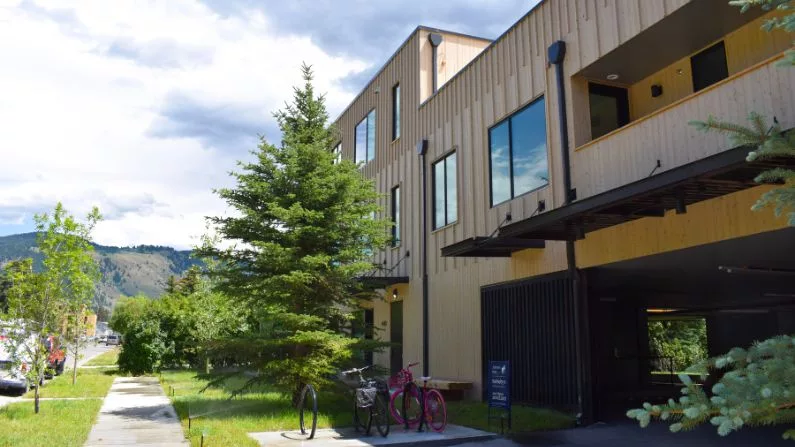Twelve workforce condos stand tall over West Kelly Avenue near the fairgrounds. After sitting empty for months, new homeowners are finally moving in.
“It’s great to see what used to be one home turned into twelve for local workers and their families,” said April Norton, who leads the Jackson/Teton County Affordable Housing Department.
A design firm, the Jackson- and Brooklyn-based Post Company, built the units thanks in part to local public dollars.
According to company partner Ruben Caldwell, the condos are geared toward dual-professional households — people like doctors and lawyers who make too much to qualify for affordable housing, but still can’t afford market rate prices.
“It serves a niche in the population that is otherwise being driven out of town,” Caldwell said.
High costs
The price of the units shot up due to high construction costs and snags in the supply chain during the Covid-19 pandemic, Caldwell said. Public investment remained the same, while the developers were tasked with covering additional costs.
Clare Stumpf, advocacy director at Shelter JH, said these prices are also a reflection of neighborhood pushback. There was originally supposed to be closer to twenty units, but community members fought for a less dense option.
“If there had been more community support, there could have been more units that could have brought down the prices,” Stumpf said.
She added, “I think the sale prices now are more a reflection of how prevalent NIMBYism is versus the failure of the department or the developer to deliver units that the community needs.”
Stumpf noted that the workforce homes won’t appreciate at the same rate as free-market houses, which over time will make them more affordable, if the owners decide to sell.
Moving in
It was harder to fill the units than expected, Caldwell said, since the cost of loans went up with interest rates. The homes have been on the market since the fall, but at least four buyers dropped out because of the rising costs, he said.
But, now, Caldwell said more than half the units are under contract, and there’s strong demand for the rest. He said his favorite part of the job is — not developing the housing — but getting to watch people move in.
“To hear everybody’s stories about their housing struggles over the years … you know the classic people moving five times or having six roommates,” Caldwell said. “It weighs on you to have housing instability. It’s a tough way to live. And so being able to be some small part of that makes me feel really good about this project.”






